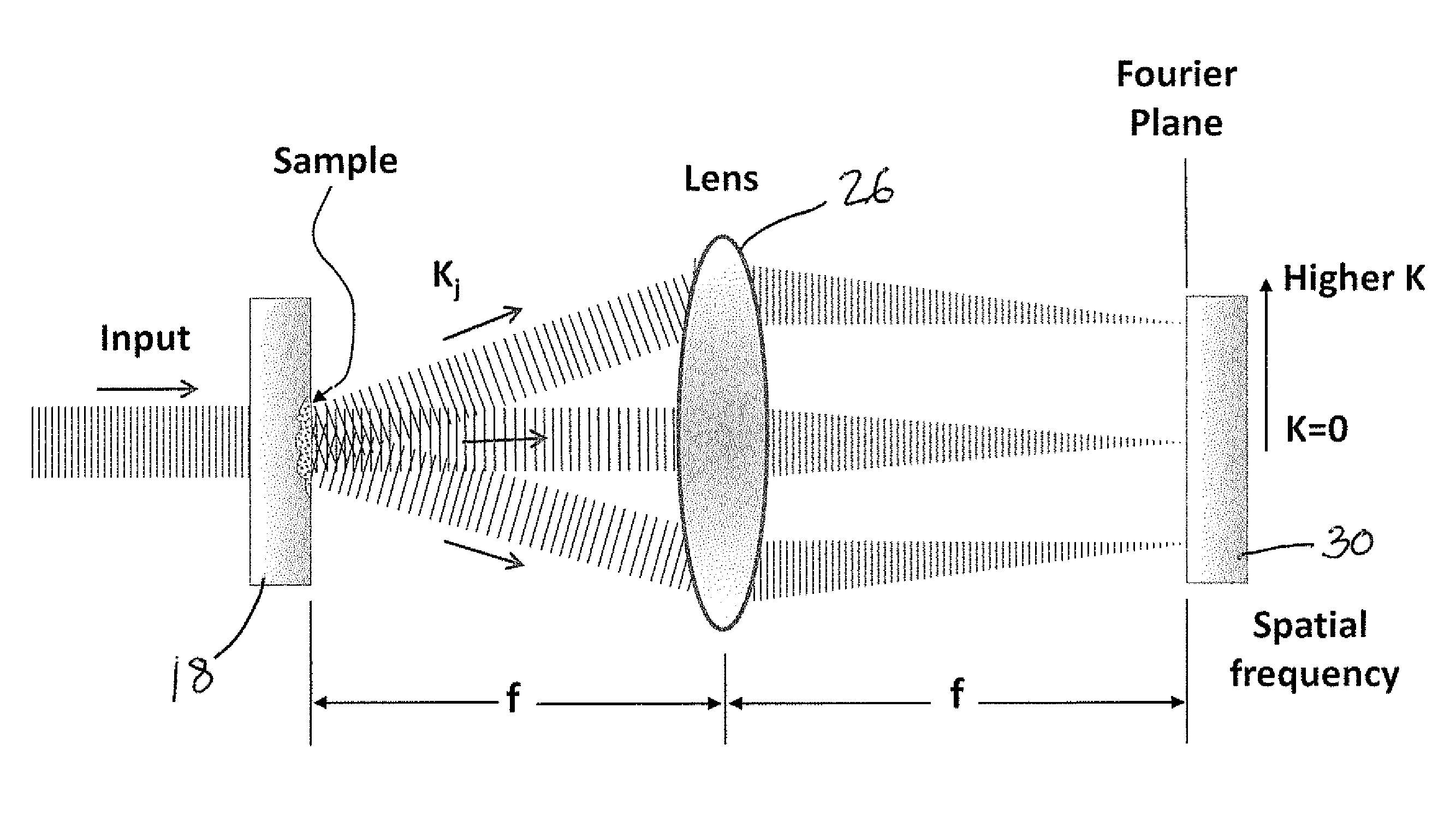Spatial frequency spectrometer for and method of detection of spatial structures in materials
a technology of spatial structure and spatial frequency spectrometer, which is applied in the direction of optical radiation measurement, interferometric spectrometry, instruments, etc., can solve the problems of diamonds having defects that can provide, random structure reduction, tissue distorted, etc., and achieve the effect of enhancing the intensity of ligh
- Summary
- Abstract
- Description
- Claims
- Application Information
AI Technical Summary
Benefits of technology
Problems solved by technology
Method used
Image
Examples
Embodiment Construction
[0021]The invention will be illustrated by two examples—tissues and art forms that demonstrate the method using a Spatial Frequency Spectrometer.
[0022]A set of 5 μm thick tissue sections of human cervix of normal, CIN 1, CIN 2, and CIN 3 tissues stained by H&E is used in this study. The spatial frequencies of these tissues images were measured and analyzed. Their images were taken by a confocal microscope (Leica TCS SPS) and shown in FIGS. 1 (a), (b), (c), and (d) for the normal, CIN 1, 2, and 3 cervical tissues, respectively.
[0023]A 4-F optical system shown in FIGS. 2-2(b) is used to record the Fourier images of the art form. As shown in these Figures, to record the Fourier Transform (FT) of an object, the object is placed at a distance f away from the lens. The image is recorded on a CCD camera at a distance f away from the lens to display the spatial frequency in the FT plane associated with the art form.
[0024]Referring specifically to FIG. 2(a), a spatial frequency spectrometer ...
PUM
| Property | Measurement | Unit |
|---|---|---|
| thick | aaaaa | aaaaa |
| detecting structure | aaaaa | aaaaa |
| spatial frequencies | aaaaa | aaaaa |
Abstract
Description
Claims
Application Information
 Login to View More
Login to View More - R&D
- Intellectual Property
- Life Sciences
- Materials
- Tech Scout
- Unparalleled Data Quality
- Higher Quality Content
- 60% Fewer Hallucinations
Browse by: Latest US Patents, China's latest patents, Technical Efficacy Thesaurus, Application Domain, Technology Topic, Popular Technical Reports.
© 2025 PatSnap. All rights reserved.Legal|Privacy policy|Modern Slavery Act Transparency Statement|Sitemap|About US| Contact US: help@patsnap.com



